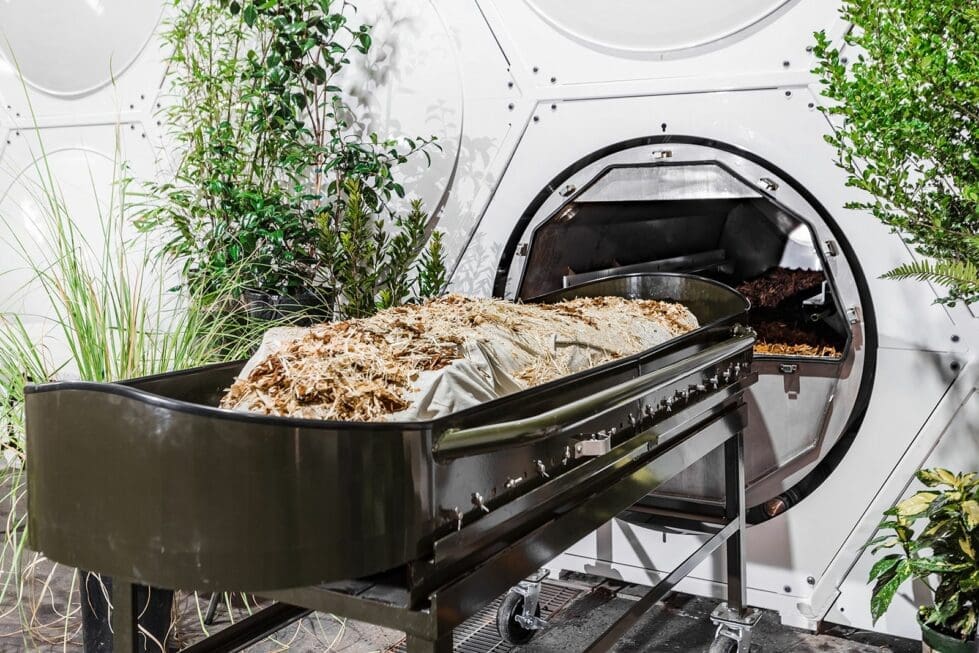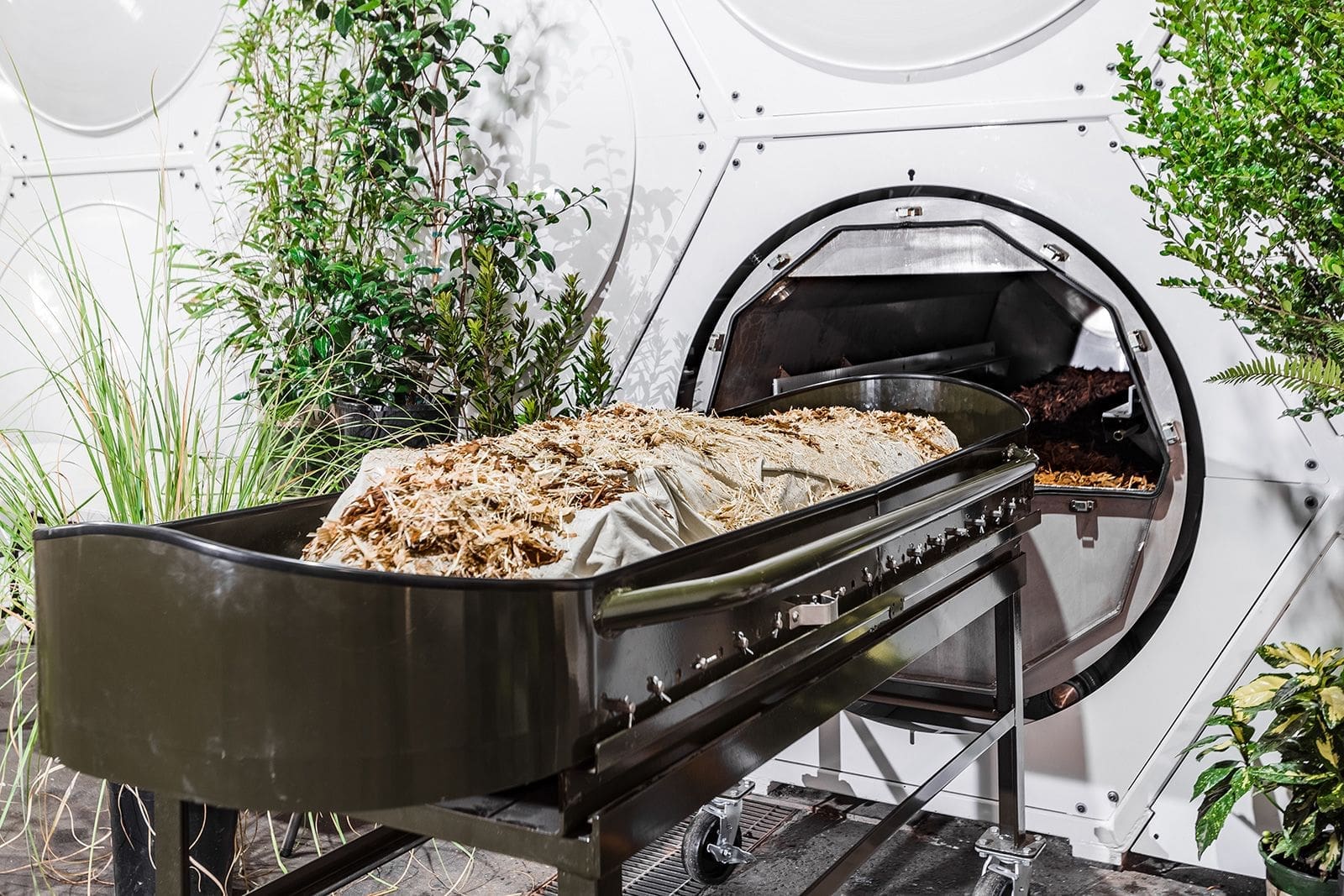Delaware’s lawmakers are ironing out the details of an increasingly popular way Americans have dealt with death: allowing the body to naturally return to the soil.
It’s one of a variety of ways to deal with bodies other than the modern, and costly, traditional services involving embalming and burial in a big casket.
Eco-friendly methods of burial are becoming more popular, said Nancy Goldenberg, chief executive officer of Philadelphia’s Laurel Hill Cemetery.
That’s partly because there’s simply going to be a lack of land for people to get buried in caskets, particularly for urban areas, where land is precious.
“I think this is something we don’t often talk about,” Goldenberg said. “We cannot continue to build cemeteries. The land just isn’t there, and cemeteries are going to fill up.”
Delaware’s legislature is considering natural organic reduction, a burial method that is slightly different from most natural – or green burials – called natural organic reduction.
It accelerates the decomposition of the body so it more quickly becomes soil. Some people call it human composting.
How does it work?
Natural reduction uses large vessels to enclose human remains with straw, wood chips or other natural materials for about 30 days.
The contents of the vessel are mixed with warm air and periodically turned to reduce the body. The remains then can be given to the deceased individual’s family.
This burial is considered a more eco-friendly alternative because it doesn’t use the formaldehyde used in embalming, and doesn’t release of carbon dioxide and mercury into the atmosphere, like cremation does. It also uses 1/8 the energy needed to perform a cremation.
Reports on cemetery business say they are increasingly receiving more natural burial requests, and that half of Americans consider choosing that option.
The green route has become so popular that there’s even a national Green Burial Council.
Even so, less than 10% of people across the country opt for natural burial, and it’s not legal everywhere.
Different type of eco-friendly burials
Green or natural burials is the interment of a body in the soil in a manner that does not inhibit decomposition but allows the body to be naturally recycled.
“You just deteriorate over time, just like any animal that gets killed and is buried,” said Greenwood, whose Laurel Hill has an award-winning green burial section. “You just decompose naturally.”
In a green/natural burial, the soft tissue of the body decomposes within several weeks but the bones can take several months to a few years to do so.
At Laurel Hill, native plants are typically seeded onto the gravesites, ultimately creating a lush garden that’s friendly to native wildlife.
Laurel Hill doesn’t even use machinery for this process. Burial spots are hand-dug, and hand-filled.
After burial, little markers or stakes – but no gravestones – allow families to identify where their loved ones are.
“We have about 1,200 graves slotted for green burial in our cemetery, and the demand has been very, very brisk,” Goldenberg said.
Another option to cremation that’s gaining interest, Goldenberg said, is alkaline hydrolysis, also known as water cremation.
The body is placed into a pressurized chamber with water and other chemicals that break down the body.
The result, similar to a traditional cremation, is soft, porous white bone remains that can be easily crushed to form a white-colored dust, which then usually is placed in a traditional urn.
The process can take up to 20 hours.
Alternative burials are legal in most states, but many do not have regulations on the process, as is the case with Delaware. However, in a quick survey of seven Delaware cemeteries, none offered green or natural burials.
Natural organic reduction is only legal in seven other states: California, Colorado, New York, Nevada, Oregon, Vermont and Washington.
This speedier process takes about 45 days, and families who chose to use it will be able to take home about a cubic yard of material.
Delaware Cemetery Board
Mark Christian, chair of the Delaware Cemetery Board, said natural organic reduction is certainly a better alternative to cremation. from an environmental point of view.
“However, my concerns are with the remains of the soil,” he said. “Does legislation prescribe no commingling of the soils of different people? What about the transfer of the final product to the family, how is it returned to them? That’s not really spelled out in the legislation.”
He said Delaware legislators need to look at the other seven states to make sure guidelines and certain specifics are spelled out in regulation.
In the early 20th Century, he said, most burials were considered “natural burials.”
“There was no such thing as a concrete burial vaults back in the old days,” he said, “and most people, if you look at some of your older cemeteries, most of those burials are actually natural burials.”
Both he and Goldenberg said other countries, often European, have a method of reusing cemeteries and almost “recycling” the grave space by giving families the right to use the space for a certain number of years before it goes to another.
In Italy, Christian said, the bones of a family member will get pushed back into the space or a container, called an ossuary, where the remains of many people are mingled, allowing space to be reused.
Christian said interest in cremation has slowly gained popularity, and he expects the adoption of eco-friendly alternatives will be gradual, but will grow.
Costs
There’s some uncertainty of the cost differences between natural organic reduction and traditional burials. The cost is not laid out in the state’s legislation.
Goldenberg said the eco-friendly methods are not necessarily cheaper, and there’s a wide range of price tags.
Their green burials range from about $5,300 to about $14,000, she said.
“It really depends on what area you’re going to be buried in,” she said. “The traditional burials can be higher or lower.”
Christian said a traditional burial is typically about $10,000, and cremations have gradually gotten more expensive.
He wants to see the cost of natural organic reduction.
“How much is this thing going to cost and where are these facilities going to be?” he said. “That’s all not really specified, and the other thing is, crematories have to have a permit process of where they’re put, so I’m wondering if the same permitting process will apply to these facilities.”
Legislative hearing
In last Tuesday’s House hearing, lawmakers were in overwhelming support for a bill that authorizes the process of natural organic reduction.
House Bill 162, sponsored by Rep. Sean Lynn, D-Dover, opens the doors for cemeteries to begin offering the unique burials.
If passed, natural burials could begin one year after the date of enactment.
Lynn pointed out that the resulting soil is tested to make sure it’s safe to plant.
In the seven other states where natural organic reduction is legal, Lynn said studies have shown the soil turns out to be of high quality and is regenerative.
Rep. Valerie Jones Giltner, R-Georgetown, suggested there should be guardrails put into place like other states have in regard to mixing the resulting soil with other soil.
Specifically, she cited how other states do not allow the soil to be combined with compost for growing food.
“There’s still a 12-month period after, hopefully, the bill passes, where there will be regulatory safeguards put in place, through the Department of Regulation,” Lynn said, “so I would expect that there will be regulations that address some of those more nuanced granular issues, and I would hope that that would be one of them.”
While Lynn didn’t have specific data on the popularity in the seven states that legalized natural organic reduction, he said he certainly predicts that percentage will go up in Delaware over time if the bill passes.
According to the bill, a person, firm, organization or association desiring to acquire, erect or construct a crematory or natural organic reduction facility shall first obtain approval from the Department of Natural Resources and Environmental Control.
The bill received 37 “yes” votes. The only two “no” votes came from two of the oldest members of the General Assembly: Rep. Charles Postles, R-Milford, and Rep. Rich Collins, R-Millsboro. They did not comment on the bill.
Wilmington & Brandywine Cemetery and Silverbrook Cemetery, declined to talk on the topic.
“You know, people are very interested in it and in terms of what I tell legislators and people, the more choices we can give people for what they want, the better,” Goldenberg said. “It’s a very personal thing, how somebody wishes to see that their body is disposed of.”

Raised in Doylestown, Pennsylvania, Jarek earned a B.A. in journalism and a B.A. in political science from Temple University in 2021. After running CNN’s Michael Smerconish’s YouTube channel, Jarek became a reporter for the Bucks County Herald before joining Delaware LIVE News.
Jarek can be reached by email at [email protected] or by phone at (215) 450-9982. Follow him on Twitter @jarekrutz
Share this Post






